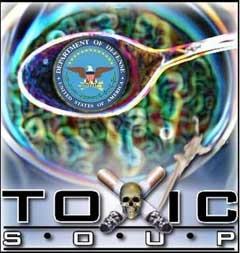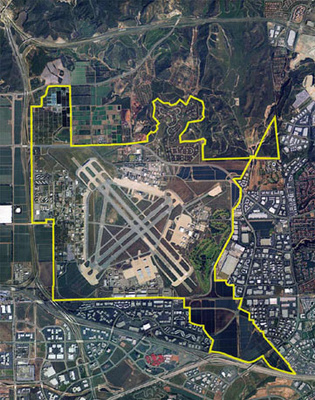by Robert O’Dowd, Staff Writer
The Defense Department is the biggest owner of EPA Superfund sites. Over 130 military bases are on the National Priority List (EPA Superfund).
In his opening statement today, Senator Daniel Akaka, Chairman of, Senate Veterans Affairs Committee, noted the requirement for the VA to provide health care and compensation to veterans who were harmed by exposures while in the military.
According to Senator Akaka, DOD “must first determine who was exposed, what they were exposed to, and the health consequences of such exposure, and then share that information with VA.”
 For any military base on the EPA Superfund list, EPA has identified hazardous agents or Chemicals of Concern (COC). This information is available to anyone with access to the internet.
For any military base on the EPA Superfund list, EPA has identified hazardous agents or Chemicals of Concern (COC). This information is available to anyone with access to the internet.
The issue of disclosure is more difficult when a veteran was exposed to a hazardous agent while in the military and the base is not an EPA Superfund.
Unless DOD discloses the information to the VA, veterans have no way of “connecting the dots to military service.”
On Thursday, the Committee heard testimony from veterans and survivors of U.S. service members who faced exposure to toxins during tours of duty in Iraq and Afghanistan, Camp Lejeune, and Atsugi Naval Air Station in Japan.
Stacy Pennington, the sister of Iraq war veteran Steven Ochs who died in 2008 from cancer, said a military burn pit in Balad, Iraq, was a “ticking time bomb” for her brother.
Former Army Staff Sergeant and medic Russell Powell testified on the inhaled clouds of orange-colored dust that blew throughout the Qarmat Ali water treatment plant when he arrived there in 2003.
Powell said, “We would have severe nose bleeds, coughing up blood, a hard time breathing, nausea, and a burning sensation in the lungs and throat.”
The substance was identified as sodium dichromate, highly carcinogenic to humans.
A group of El Toro veterans and other interested parties submitted written comments to the Committee. None of the El Toro veterans were scheduled to give testimony. Marine Corps Air Station (MCAS) El Toro, California, is one of 130 military bases on the EPA Superfund.
A video on the Committee’s hearing can be viewed at: veterans.senate.gov/hearings
The following written comments to the Committee stressed the critical need for disclosure of hazardous agents, medical monitoring and access to tests for veterans, and medical care and disability for those with current medical conditions:
October 8, 2009
Senate Committee on Veterans Affairs
Chairman Senator Daniel Akaka and Ranking Republican Senator Richard Burr
United States Congress
Washington D.C.
Subject: Hearing on the VA/DOD Response to Certain Military Exposures – Submission for the Record
Dear Sirs:
We thank you for holding hearings regarding military exposure to hazardous agents. We understand the hearings focus on a few locations your Committee has concerns about regarding potential health hazards. We are providing very brief comments for your consideration and the record. We request that you pursue actions to mitigate health problems arising from hazardous exposures at US military bases.
Marines and others who serve anticipate hazardous conditions will occur. While efforts should be made to minimize hazards, some activities are inherently dangerous and even lethal. We realize that knowledge of chemical hazards was neither as extensive nor widespread in past decades. But the degree of hazard is clearly indicated by the 130 current and former military bases that are federally-designated Superfund sites. This designation requires extensive proof of hazardous chemical contamination. Carcinogenic, neurotoxic, and mutagenic chemicals were used during military duties (e.g., jet fuels and other fuels, degreasing solvents) without personal protective gear. Burn pits and other operations created additional toxic airborne chemicals, and often the soil, dust, and water on bases were contaminated. The burden of exposure and disease is only now being fully realized.
El Toro is one of many bases operated to serve US defense needs, manned by people who put their lives on the line to protect and defend our citizens. The prevalence of hazards on bases is illustrated by the example shown enclosed. Many veterans have difficulty locating information on chemicals that they were exposed to, if they know that the information exits. Medical evaluations of their exposures and illnesses that may result in a Nexus statement are very expensive. Yet this is required to receive essential medical care and disability support. This process is indefensible given the substantial medical science available to the VA on chemical hazards.
While we welcome an opportunity to provide additional information, for the sake of brevity we request that your Committee carefully consider and prompt the VA to take the following actions essential to preserving the health of Veterans:
- Disclosure of hazardous agents used on military bases, with information on potential health effects of the agents
- For those highly exposed to hazardous agents, provision of medical monitoring and access to tests for early diagnosis of diseases related to hazardous agents
- Medical care and disability for those with medical conditions related to their military service
Valuing the service provided by Veterans requires the VA and DOD’s participation in basic public health outreach and services. This will provide the Veterans the best opportunity for good health, improve the economic viability of their families, and it is fundamentally the right and just thing to do. We are submitting these comments as Marines, family members of Marines, and health professionals working with Marines who served at the El Toro Marine Base in Irvine California.
Submitted via e-mail on October 8, 2009
Respectfully submitted by the following individuals,
Robert O’Dowd
Marine Veteran
Former Financial Manager, Defense Logistics Agency
James Davis
Founder and President of Veterans for Change
Son of Marine
Mary Davis
Former Judge Advocate General (JAG) employee
Wife of Marine
Tim King
Marine Veteran
Journalist
Bonnie King
Wife of Marine Veteran
Journalist
Johnny P. Barron
Marine Veteran
Sr. Systems Programmer
John Paul Rossi
Navy Veteran
Executive Director Blue Water Navy Vietnam Veterans Association
Patrick McDade
Marine Veteran
Electronics technician
William Mimiaga
Marine Veteran
Special Education Teacher
Christine Mimiaga
Air Force Veteran
Educator/Writer
John Uldrich
Marine Veteran
Entrepreneur
Dr. Kathleen Burns
Director, Sciencecorps
Dr. Philip Leveque
Forensic Toxicologist/Pharmacologist
Dr. Michael Harbut
Chief, Center for Occupational and Environmental Medicine Chair, Science Committee, Michigan Agent Orange Commission, 1987 – 1988″
Dr. Daniel Teitelbaum
Adjunct Professor
Colorado School of Public Health & University of Colorado at Denver
Military Bases on EPA Superfund List
US Air Force
Air Force Plant #4 (General Dynamics) Fort Worth TX Air Force Plant 85 Columbus OH Air Force Plant PJKS Littleton CO American Lake Gardens/McChord AFB Tacoma WA Andersen Air Force Base Yigo GU Andrews Air Force Base Andrews Air Force Base MD Arnold Engineering Development Center (USAF) Tullahoma/Manchester TN Brandywine DRMO Brandywine MD Castle Air Force Base (6 Areas) Merced CA Chanute Air Force Base Rantoul IL Dover Air Force Base Dover DE Edwards Air Force Base Edwards AFB CA Eielson Air Force Base Fairbanks AK Ellsworth Air Force Base Ellsworth AFB SD Elmendorf Air Force Base Anchorage AK F.E. Warren Air Force Base Cheyenne WY Fairchild Air Force Base (4 Waste Areas) Spokane WA George Air Force Base Victorville CA Griffiss Air Force Base (11 Areas) Rome NY Hanscom Field/Hanscom Air Force Base Bedford MA Hill Air Force Base Hill AFB UT Homestead Air Force Base Homestead Air Force Base FL Loring Air Force Base Limestone ME Luke Air Force Base Glendale AZ March Air Force Base Riverside CA Mather Air Force Base (AC&W Disposal Site) Mather CA McChord Air Force Base (Wash Rack/Treatment Area) Tacoma WA McClellan Air Force Base (Ground Water Contamination) McClellan AFB CA McGuire Air Force Base #1 Wrightstown NJ Mountain Home Air Force Base Mountain Home ID Norton Air Force Base (Lndfll #2) San Bernardino CA Pease Air Force Base Portsmouth/Newington NH Plattsburgh Air Force Base Plattsburgh NY Rickenbacker Air National Guard (USAF) Lockbourne OH Robins Air Force Base (Landfill #4/Sludge Lagoon) Houston County GA Tinker Air Force Base (Soldier Creek/Building 3001) Oklahoma City OK Travis Air Force Base Travis AFB CA Twin Cities Air Force Reserve Base (Small Arms Range Landfill) Minneapolis MN Tyndall Air Force Base Panama City FL Williams Air Force Base Chandler AZ Wright-Patterson Air Force Base Dayton OH Wurtsmith Air Force Base Oscoda MI
US Army
Aberdeen Proving Ground (Edgewood Area) Edgewood MD Aberdeen Proving Ground (Michaelsville Landfill) Aberdeen MD Alabama Army Ammunition Plant Childersburg AL Anniston Army Depot (Southeast Industrial Area) Anniston AL Cornhusker Army Ammunition Plant Hall County NE Fort Devens Fort Devens MA Fort Devens-Sudbury Training Annex Sudbury MA Fort Dix (Landfill Site) Pemberton Township NJ Fort Eustis (US Army) Newport News VA Fort George G. Meade Odenton MD Fort Lewis (Landfill No. 5) Tacoma WA Fort Lewis Logistics Center Tillicum WA Fort Ord Marina CA Fort Richardson (USARMY) Anchorage AK Fort Riley Junction City KS Fort Wainwright Fort Wainwright AK Iowa Army Ammunition Plant Middletown IA Joliet Army Ammunition Plant (Load-Assembly-Packing Area) Joliet IL Joliet Army Ammunition Plant (Manufacturing Area) Joliet IL Lake City Army Ammunition Plant (Northwest Lagoon) Independence MO Letterkenny Army Depot (PDO Area) Franklin County PA Letterkenny Army Depot (SE Area) Chambersburg PA Lone Star Army Ammunition Plant Texarkana TX Longhorn Army Ammunition Plant Karnack TX Louisiana Army Ammunition Plant Doyline LA Materials Technology Laboratory (USARMY) Watertown MA Milan Army Ammunition Plant Milan TN Natick Laboratory Army Research, Development, and Engineering Center Natick MA New Brighton/Arden Hills/TCAAP (USARMY) New Brighton MN Picatinny Arsenal (USARMY) Rockaway Township NJ Riverbank Army Ammunition Plant Riverbank CA Rocky Mountain Arsenal (USARMY) Adams County CO Sacramento Army Depot Sacramento CA Savanna Army Depot Activity Savanna IL Schofield Barracks (USARMY) Schofield HI Seneca Army Depot Romulus NY Sharpe Army Depot Lathrop CA Sunflower Army Ammunition Plant Desoto KS Tobyhanna Army Depot Tobyhanna PA Tooele Army Depot (North Area) Tooele UT Tracy Defense Depot (USARMY) Tracy CA Umatilla Army Depot (Lagoons) Hermiston OR US Army/NASA Redstone Arsenal Huntsville AL Weldon Spring Former Army Ordnance Works St. Charles County MO West Virginia Ordnance (USARMY) Point Pleasant WV
US Coast Guard
Curtis Bay Coast Guard Yard Baltimore MD
US Navy
Adak Naval Air Station Adak AK Alameda Naval Air Station Alameda CA Allegany Ballistics Laboratory (USNAVY) Mineral County WV Bangor Naval Submarine Base Silverdale WA Bangor Ordnance Disposal (USNAVY) Bremerton WA Barstow Marine Corps Logistics Base Barstow CA Brunswick Naval Air Station Brunswick ME Camp Lejeune Military Res. (USNAVY) Onslow County NC Camp Pendleton Marine Corps Base Camp Pendleton CA Cherry Point Marine Corps Air Station Havelock NC Concord Naval Weapons Station Concord CA Davisville Naval Construction Battalion Center North Kingstown RI El Toro Marine Corps Air Station El Toro CA Indian Head Naval Surface Warfare Center Indian Head MD Jackson Park Housing Complex (USNAVY) Kitsap County WA Jacksonville Naval Air Station Jacksonville FL Marine Corps Combat Development Command Quantico VA Marine Corps Logistics Base Albany GA Moffett Naval Air Station Moffett Field CA Naval Air Development Center (8 Waste Areas) Warminster Township PA Naval Air Engineering Center Lakehurst NJ Naval Air Station, Whidbey Island (Ault Field) Whidbey Island WA Naval Air Station, Whidbey Island (Seaplane Base) Whidbey Island WA Naval Amphibious Base Little Creek Virginia Beach VA Naval Computer and Telecommunications Area Master Station Eastern Pacific Wahiawa HI Naval Industrial Reserve Ordnance Plant Fridley MN Naval Security Group Activity Sabana Seca PR Naval Surface Warfare Center – Dahlgren Dahlgren VA Naval Undersea Warfare Engineering Station (4 Waste Areas) Keyport WA Naval Weapons Industrial Reserve Plant Bedford MA Naval Weapons Station – Yorktown Yorktown VA Naval Weapons Station Earle (Site A) Colts Neck NJ Navy Ships Parts Control Center Mechanicsburg PA New London Submarine Base New London CT Newport Naval Education & Training Center Newport RI Norfolk Naval Base (Sewells Point Naval Complex) Norfolk VA Norfolk Naval Shipyard Portsmouth VA NWS Yorktown – Cheatham Annex Yorktown VA Parris Island Marine Corps Recruit Depot Parris Island SC Patuxent River Naval Air Station Patuxent River MD Pearl Harbor Naval Complex Pearl Harbor HI Pensacola Naval Air Station Pensacola FL Port Hadlock Detachment (USNAVY) Indian Island WA Portsmouth Naval Shipyard Kittery ME Puget Sound Naval Shipyard Complex Bremerton WA South Weymouth Naval Air Station Weymouth MA St. Juliens Creek Annex (U.S. Navy) Chesapeake VA Treasure Island Naval Station-Hunters Point Annex San Francisco CA USN Air Station Cecil Field Jacksonville FL Washington Navy Yard Washington DC Whiting Field Naval Air Station Milton FL Willow Grove Naval Air and Air Reserve Station Horsham PA Yuma Marine Corps Air Station Yuma AZ

Robert O’Dowd served in the 1st, 3rd and 4th Marine Aircraft Wings during 52 months of active duty in the 1960s. While at MCAS El Toro for two years, O’Dowd worked and slept in a Radium 226 contaminated work space in Hangar 296 in MWSG-37, the most industrialized and contaminated acreage on the base.
Robert is a two time cancer survivor and disabled veteran. Robert graduated from Temple University in 1973 with a bachelor’s of business administration, majoring in accounting, and worked with a number of federal agencies, including the EPA Office of Inspector General and the Defense Logistics Agency.
After retiring from the Department of Defense, he teamed up with Tim King of Salem-News.com to write about the environmental contamination at two Marine Corps bases (MCAS El Toro and MCB Camp Lejeune), the use of El Toro to ship weapons to the Contras and cocaine into the US on CIA proprietary aircraft, and the murder of Marine Colonel James E. Sabow and others who were a threat to blow the whistle on the illegal narcotrafficking activity. O’Dowd and King co-authored BETRAYAL: Toxic Exposure of U.S. Marines, Murder and Government Cover-Up. The book is available as a soft cover copy and eBook from Amazon.com. See: http://www.amazon.com/Betrayal-Exposure-Marines-Government-Cover-Up/dp/1502340003.
ATTENTION READERS
We See The World From All Sides and Want YOU To Be Fully InformedIn fact, intentional disinformation is a disgraceful scourge in media today. So to assuage any possible errant incorrect information posted herein, we strongly encourage you to seek corroboration from other non-VT sources before forming an educated opinion.
About VT - Policies & Disclosures - Comment Policy





